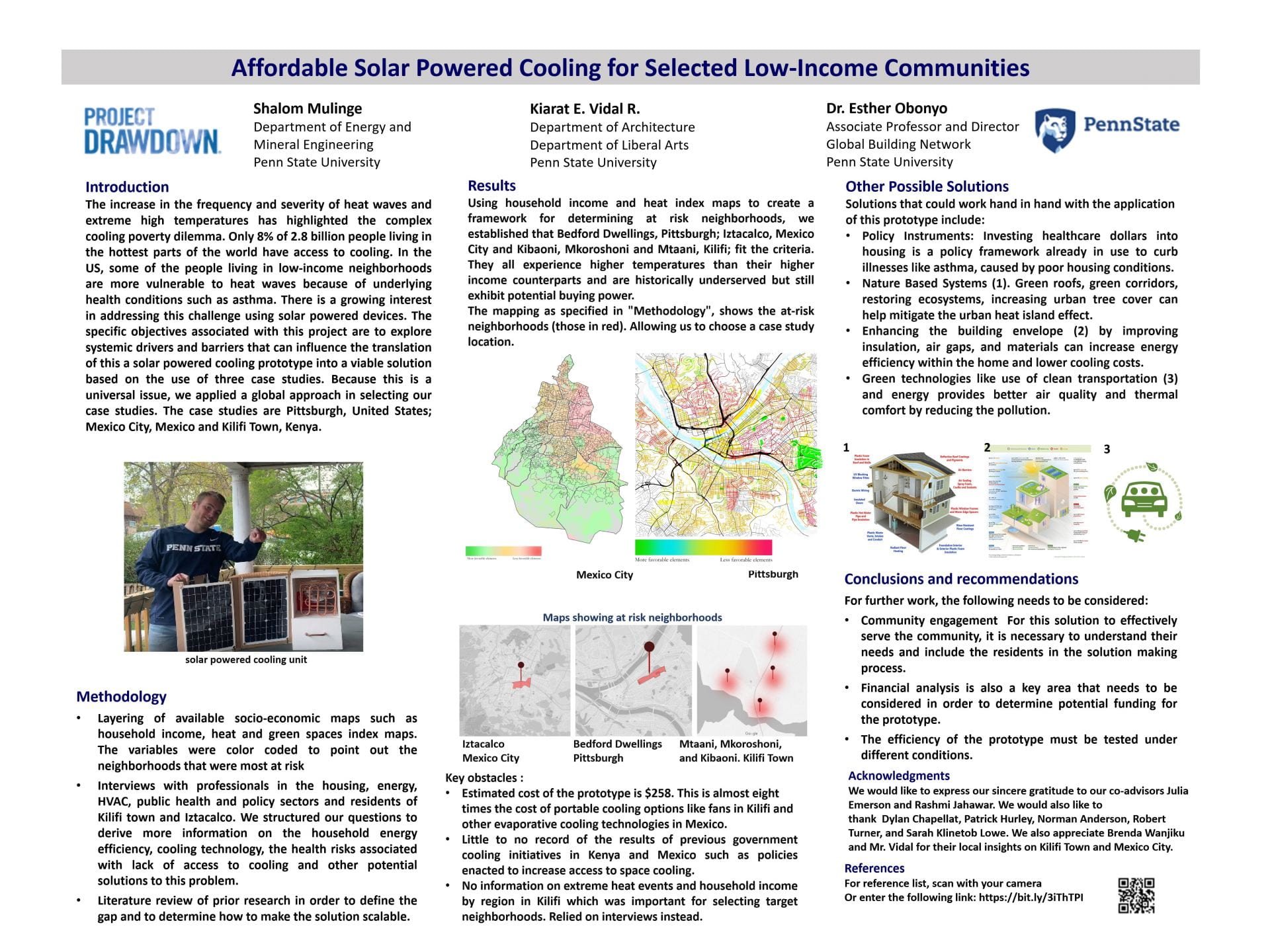Project Team
Student(s)
Mentor(s)
Global Building Network
Project Video
Project Abstract
It is getting hotter. Heatwave events in 2021 have resulted in 116 fatalities in Oregon and 78 in Washington in the United States alone. Low-income households have poorly performing buildings that lack air conditioning which makes them more vulnerable. There is a growing interest in addressing this challenge using solar powered devices that are affordable. As part of previous research, a prototype device was designed and developed. This Drawdown project seeks to explore the systemic drivers and barriers that can influence the translation of this prototype into a viable solution based on the use of three case studies. In the U.S., some of the people living in predominantly black neighborhoods are more vulnerable to heat waves because of pre-existing health conditions. Pittsburgh exemplifies this problem. In Allegheny County, where Pittsburgh is located, the rate of incidence of asthma among children in black neighborhoods is significantly higher with a rate of 26.8 percent, which is triple the national average at 8.5 percent. Mexico City, with a population of over 9 million exemplifies the nuances in cooling accessibility in large cities in the global south. Rapid urbanization is expected to compound the impact of heat waves on human health and well-being through the urban heat island effect. Rural towns such as Kilifi in Kenya lack access to affordable, clean and reliable power, an example of how 1.6 billion people across the globe still do not have regular access to an electrical grid according to the World Bank. The extreme heat events will continue to compound all these inequities.
The specific objectives associated with this Drawdown project include: 1) identifying high risk neighborhoods within our case study cities that would best benefit from this prototype; 2) determining the potential drivers and barriers that would influence its implementation, and 3) investigating government initiatives and policies that are already in place or that would promote implementation. A multi-pronged approach was adopted for the research methodology, including mapping key parameters within the case studies to determine at risk neighborhoods, performing interviews with qualified professionals and residents, and reviewing past literature. The key findings include potential target neighborhoods within our case studies such as Bedford Dwellings in Pittsburgh, driving forces which may influence implementation, and other potential solutions that could mitigate the problem such as nature-based systems and healthcare-housing-funding policy instruments. The target neighborhoods were selected because they comprised of low-income groups and experienced higher temperatures than their high-income counterparts. They were not on the extreme end of poverty on the income index maps and thus had potential buying power. As part of further research, the following steps need to be taken; engaging the communities to understand the needs of the target population, testing of the prototype under diverse conditions to determine its efficiency and to perform improvements, and a financial analysis to establish funding for the prototype.
Project Poster

https://sites.psu.edu/drawdownscholars/files/formidable/13/Poster-V2-4.pdf


